“The Future of Science in the 21st Century: Climate change: impacts on ocean, food production, health and the economy”
2015 is a special year with the upcoming Climate Conference (Conference of Parties, COP21) in Paris in December. Its goal is to reach a global agreement to mitigate and adapt to climate change as part of the United Nations Framework Convention on Climate Change.
Hence, EURASC has focused our 2015 meeting on “Climate change: impacts on ocean, food production, health and the economy”. The symposium will be an official event of COP21, invited by the Université de Bretagne Occidentale and organised by the European Academy of Sciences.
EURASC 2015 is hosted by “SaferSeas”, an international event that takes place every two years in Brest, France. The EURASC 2015 conferences will be open to the participants of the other “SaferSeas” workshops and conferences; reciprocally the registered EURASC participants can attend the “SaferSeas” workshops and conferences.
Download the Brest Declaration (PDF file)
Videos
Welcoming speech – Introduction speech for EurASc – Brest Declaration – Ceremony of Award for the Leonardo da Vinci Award
Speakers and abstracts
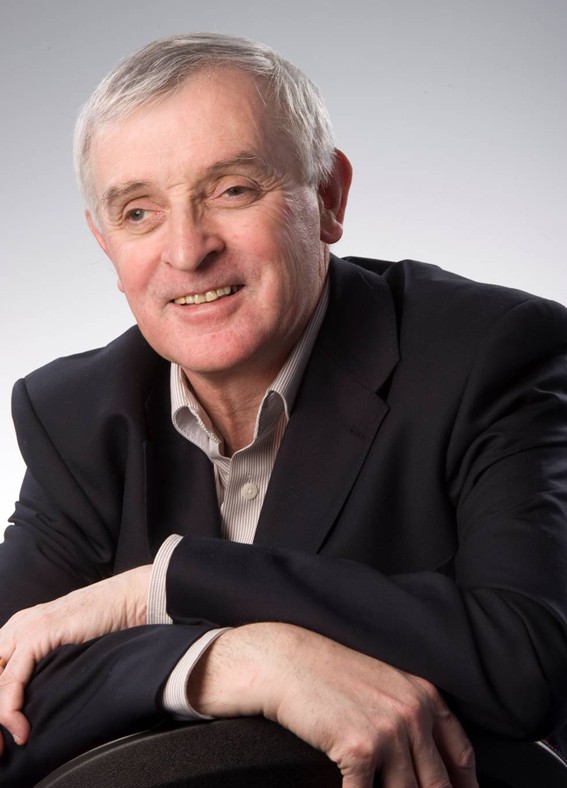
Professor Jean Jouzel
Vice-President of the International Panned for Climate Change, France
“Climate changes on planet Earth: from the past to the present and the future”
Since the eigthties, studies of past climate have provided a wealth of information directly relevant to its evolution in the future. These results include, in particular, the discovery of a link between greenhouse gases and climate in the past and the characterization of rapid climate changes. They are, for example, based on the analysis of deep ice cores such as drilled at the Vostok site and Dome C sites en East Antarctica, which allow us to describe the evolution of the Antarctic climate and of the atmospheric composition over more than 800000 years and in central Greenland which provide a very detailed description of the rapid climate changes that have punctated the last glacial period and the following climatic transition. These past climate changes, also documented from the analysis of oceanic and continental records, are of the highest interest for the climate modelling community. Focusing on deep ice core results, based on studies in which French teams are deeply involved, I will illustrate how past climate changes are key to better understand climate processes and climate variability, and thus climate evolution from the past to the future. I will then discuss this future evolution as projected by climate models for different scenarios of greenhouse gas emissions and the associated impacts. I will examine both the «emitting» scenario which leads to global warming above 4°C at the end of this century and the «low carbon» scenario which allows to keep long-term global warming below 2°C with respect to pre-industrial climate. The last part of the presentation will deal with the Climate Conference which will start at the end of next month in Paris.
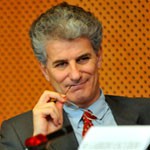
Professor Andrea Tilche
DG Research and Innovation, European Commission
“Climate challenges for Europe”
The recent Intergovernmental Panel on Climate Change (IPCC) Fifth Assessment Report has shown very clearly that collective, urgent action is needed to keep the planet’s climate within tolerable levels of warming. It also estimated that proactive action for keeping the world within the 2°C warming boundaries will cost lesser, the earlier decarbonisation actions start. At EU level, ambitious targets have been set for 2030 on greenhouse gas (GHG) emissions reduction, renewable energy and energy efficiency, and efforts are accelerating to implement the climate adaptation strategy. On the road to COP21, some interesting signs help supporting some optimism about entering into a virtuous new cycle, such as:
– The International Energy Agency (IEA) announcement that “global emissions of carbon dioxide from the energy sector stalled in 2014, marking the first time in 40 years in which there was a halt or reduction in emissions of the greenhouse gas that was not tied to an economic downturn” and suggesting that efforts to mitigate climate change may be having a more pronounced effect on emissions than had previously been thought.
– The Declaration issued at the last G7 Summit reaffirming a commitment to limit the increase of global average temperatures below 2°C. The seven most industrialised countries of the world expressed their strong determination to reach a deal at the COP 21 of the UNFCCC in Paris in December 2015 and emphasized the need for “deep cuts in global greenhouse emissions” and “a decarbonisation of the global economy over the course of this century.”
At EU level, the European Commission, through the Horizon 2020 Research and Innovation Programme, is addressing key challenges in order to support the EU ambitious goals and prepare for further more ambitious goals after 2030, working on three main areas, namely: 1) climate services, for supporting decision-making at all levels; 2) deep decarbonisation pathways, to help designing credible and cost-effective trajectories which may lead as well to the creation of growth and jobs; and 3) solve problems linked to the changes in predictability of climate (e.g. the role of the Arctic in the global climate system and in the genesis of extreme weather events in the northern latitudes).

Professor Jan Mees
Director, Flanders Marine Institute and Chair, European Marine Board
“The Ocean-Climate Nexus: Key messages of the 5th European Marine Board Forum”
Human-induced climate change poses one of the main challenges faced by society in the 21st century. Global warming and high CO2 levels are driving changes in, for example, sea level, patterns of air temperature, precipitation and extreme weather events. In addition, changes in sea temperatures, ocean circulation and ocean chemistry (e.g. acidification) are expected to affect the species composition in the open ocean and, in turn, the removal of atmospheric CO2 by the ocean, with unknown consequences. There is no certainty regarding the precise nature and rate of future climate change. However, even the more moderate of the predicted scenarios is expected to result in major changes in the marine environment, with potentially enormous environmental, economic and social consequences. As the ocean is a major part of the earth system, ocean science is an important part of the knowledge base which must underpin the societal response to climate change. On the 21 October 2015, the European Marine Board has organized a special 5th EMB Forum event entitled, “The Ocean-Climate Nexus: The Critical Role of Ocean Science in Responding to Climate Change”. Hosted in the European Parliament by Portuguese MEP, Prof. Ricardo Serrao Santos, the event was designed to highlight the role of marine science in guiding the societal response to climate change in the run-up to the COP21 in Paris. This presentation will summarize the key messages – a “Consensus Statement” – on future ocean and climate research priorities launched at the 5th EMB Forum. The statement is the product of a working group of European and US climate scientists and represents a combined position of the EMB and the US Consortium of Ocean Leadership.
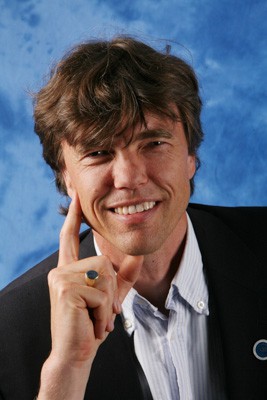
Professor Martin Visbeck
Head of the AtlantOS programme (Horizon 2020)
“Climate Change in the Atlantic Ocean — Evidence from Observations?”
The Oceans cover more than 70% of the Earth’s surface. Oceans influence the earth’s climate, and provide mankind with essential living and non-living resources. They are a source of risks, e.g. due to sea level rise caused by climate change, tsunamis and storm surges. At the same time they hold the potential to provide sustainably harvested food, biological and chemical substance or non-renewable material resources. They provide life supporting services such as the oxygen that be breathe, climate stability and allow efficient global transport of goods. For Europe the Atlantic Ocean is the most relevant ocean that has the potential to influence regional climate and the European marginal seas. How will the Atlantic Ocean chance due to a changing climate? “Global warming” is mainly caused by the anthropogenic emissions of greenhouse gases, which alter the radiation balance of the planet. As a consequence heat is trapped and the atmosphere and ocean are warming. At the global scale one of the clear effects is an increase in the upper ocean heat content. This together with glacial ice melt causes measurable sea level rise. At the same time most of the regional ocean circulation and changes in the heat are driven by the wind. Regional variability of the wind fields is part of the naturally occurring climate variability, sometimes coupled to the ocean circulation. At present this decadal variability is larger than expected climate change at the regional scale. Changes in ocean dynamics can directly influence both the regional and global biogeochemical cycles and the marine ecosystem. For example there is growing evidence that the ocean is loosing oxygen, a process called deoxygenation. This effect is most dramatic in regions of already low levels of dissolved oxygen such as the tropical oxygen minimum zones. Ocean heat transport and the potential ocean carbon uptake are modulated by the strengths of the ocean’s meridional overturning circulation (MOC). The MOC is expected to slow down by 30% at the end of the century. At this point in time direct observations show no significant change in agreement with model based scenarios. In order to document, assess and understand current and future ocean changes in the Atlantic and elsewhere, more observations by satellite and in-situ are needed. A recently launched EU project, AtlantOS, set out to make Atlantic Ocean Observing more integrated, more international, fit-for-purpose and sustainable. The prospects and needs for future of ocean observing will be discussed.
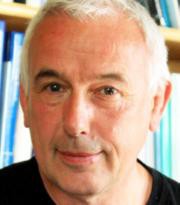
Professor Paul Wassmann
University of Tromso, Head of the Arctos Network
“Climate change impacts on the Arctic Ocean ecosystems”
The rapid retreat of summer sea ice in the Arctic Ocean is effectively opening a new ocean, for the first time in human history. The loss of ice affects the regional and global climate system, Arctic and subarctic ecosystems, and national and international policies concerning the management of ecosystems and resources. To date, most research and activity in the Arctic Ocean has taken place on the continental shelves, within the Exclusive Economic Zones of the Arctic rim nations. Human activity in these regions, such as shipping, oil and gas development, or fisheries, is on the rise and may have lasting effects on ecosystems and economies. This deserves, and is receiving, extensive study, including international collaboration. The central Arctic Ocean, on the other hand, has seen less research, and access to international waters is open to all nations. As sea ice ceases to be a barrier to this region, international governance mechanisms will have to be applied or developed here in order to avoid damaging the ecosystem and potentially undermining management efforts within national jurisdictions. Studying the central Arctic Ocean is logistically challenging and expensive, yet many nations have sent icebreakers to the region and are expected to continue to do so. Simultaneously strong emphasis is provided to the development and application of cost efficient autonomous vehicles, instruments and robots. Making the best use of this collective research capacity can help build knowledge about the ecosystem and the changes it is undergoing. That knowledge, together with the commitment to cooperation shown in research, can support national and international efforts to manage human activities in the Arctic Ocean to minimize impacts to an already rapidly changing ecosystem. Through a broad overview the talk presents information about the effects of climate change in the Arctic Ocean, including the changes in ice, the physical oceanography and marine ecosystems. Emphasis is provided to the productivity of phyto- and zooplankton, now and in the future. The regions with the most prominent changes and the effects on marine biota and fisheries will be depicted.
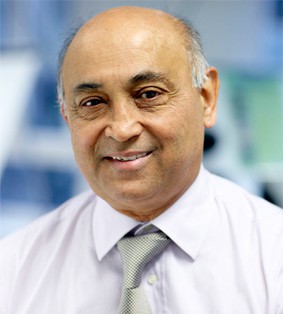
Professor Anil Markandya
Basque Center for Climate Change, Spain
“The economic impacts of climate change”
Any assessment of the economic costs of climate change has to be relative to a counterfactual in which such climate change does not occur. The available counterfactuals to 2060 and 2100 put forward a world that is considerably richer than it is now and, moreover, one in which the gap between the rich and poor countries has narrowed. Against this background the studies of the impacts of climate change show a small impact in terms of losses of GDP to 2060, with small reduction in convergence between the developed and developing world. The models are generally of the Computable General Equilibrium (CGE) type and take account of the economic losses due to changes in crop yields, loss of land and capital from sea level rise, loss of capture fisheries, capital damages from hurricanes, mortality and morbidity from infectious, cardiovascular and respiratory diseases, morbidity from heat and cold exposure, changes in energy demand for cooling and heating and changes in tourism flows and services. We present these results first to 2060 and discuss some reasons why the estimates may be too low, based on some recent evidence of extreme events and their impacts on GDP growth in developing countries. From 2060 onward it is not possible to use a CGE model and so the analysis relies on Integrated Assessment Models (IAMs). These indicate grater effects relative to the baseline, but with greater ranges of uncertainty. These arise in part due to the uncertainty about future greenhouse gas emissions and partly about the ways in which impacts will impact on economic sectors. The presentation concludes with a discussion of the open questions on the economic consequences of climate change.
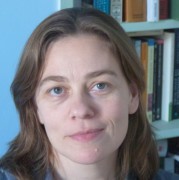
Professor Sari Kovats
London School of Hygiene and Tropical Medicine, United Kingdom
“Health impacts of climate change”
Global environmental policies are being implemented, both for mitigation and adaptation, and one of the implicit reasons is to protect human health. Explicitly, human health is not very apparent within the text of the international conventions, as it appears in few places within the UN Framework Convention on Climate Change. The implications of global environmental changes for human population health are wide ranging and potentially serious. Climate change is a complex environmental problem that acts over large spatial and temporal scales. Climate warming is already occurring and 2014 was the hottest year on record. However, the key concern is the impacts anticipated to occur in the coming decades. Evidence for current or future impacts on population health need to address policy relevant objectives, such as the magnitude and distribution of future impacts (particularly the effects on future health inequalities). A new generation of impact models is needed that takes into account feedbacks and the dynamic nature of interactions between environmental factors and human populations. The impact of environmental changes will be felt within the context of extremely rapid social changes. Formal risk assessment needs to be relevant for decades ahead — and will certainly cover a range of exposures outside the range of original observations. National and local adaptation plans need to be underpinned by high quality research on the health effects of current climate risks and how these may involve in the future. Adaptation planning requires different approaches to traditional environmental risk assessment, particularly to assess risks beyond 2050, and under high rates of warming. In the near term, effects on health will be through changes in the frequency and intensity of natural hazards — floods and heat waves. Current public health policy focusses on early warnings and emergency planning, and we now have better evidence on how these risk are mediated though features of the built environment, and changes in land cover. Estimates of the impact of global environmental changes, such as climate change, should incorporate risks to health and welfare.
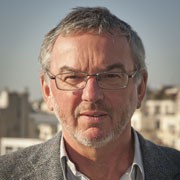
Professor John R. Porter
University of Copenhagen, Denmark
“Food systems and food security as drivers and outcomes of climate-smart agriculture”
Climate-smart agriculture is defined in terms of a set of outcomes from farming systems: improved agricultural productivity or food security, higher adaptive capacity and, where possible, reduced or removed greenhouse gas emissions. The actions needed to achieve these outcomes are most commonly conceptualised as a set of practices, technologies and services at the level of farms and farming landscapes. Yet a growing body of evidence shows that actions in agriculture and land use cannot, in isolation, achieve global aspirations for food security and low emissions development. Pre-production and post-production stages of the food supply chain can provide substantial, but under-researched, contributions to climate risk management, adaptation and mitigation. One way of linking and deconstructing these stages is via the use of identities and these will be described and their use illustrated in the talk — thus leading to the notion of climate-smart food systems. Demand-side factors in the wider food system, particularly dietary patterns and trends, are arguably a greater determinant than primary agricultural productivity, of long-term food security and environmental sustainability under climate change. Changes in behaviours, norms and policies among consumers and within food systems can benefit sustainability, equity and human health — and provide a strong signal to climate-smart agriculture and food systems, informing best practice and linking agricultural outcomes more closely with desired food system outcomes.

Professor Michel Colombier
Institut du développement durable et des relations internationales IDDRI, Sciences Po, France
“Climate change and international treaties”
After the failure of the Copenhagen meeting, the multilateral negotiations have developed along a very different approach to the international coordination problem. Between 2010 and 2015, a number of developments occurred that frame the forthcoming Paris Cop 21 : the adoption of a global mitigation objective of 2°C deviation (operationalization of UNFCCC article 2) and the emerging discussion on a possible global adaptation goal, the bottom-up process of Intended Nationally Determined Contributions (INDCs), the promises that adequate funding would be mobilized to respond to the collective challenge, the questioning of the traditional Annex I / Non Annex I divide and of the effective options to consider “Common but Differentiated Responsibilities” in the design of the agreement, etc. These developments send contradictory signals regarding the effectiveness of the current process and its capacity to generate an adequate (ambitious enough) response to the collective challenge. We will provide an analysis of these developments, including available INDCs at the time, to identify the key challenges for the Paris conference and in particular highlight the possible interaction with the ocean community, in Paris and after Paris.
Medallists
Blaise Pascal Medal in Chemistry
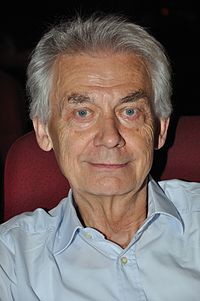
Prof. Herbert Roesky
in recognition of the outstanding originality and creativity of his research in inorganic Chemistry.
“Some highlights of main group Chemistry”
Silicon is after oxygen the most abundant element in the earth’s crust, followed by aluminum on place 3. Therefore we concentrated our research in the last two decades on these ubiquitous elements and developed new classes of compounds and improved their applications. Silicon is available in form of sand or quartz but for technical applications, this SiO2 has to be reduced to elemental silicon. This is a high energy consuming process. Moreover, this silicon contains too many impurities and has to be converted to trichlorosilane (HSiCl3). The latter compound is a distillable liquid and this allows removal of all impurities. Finally, it has to be reduced with molecular hydrogen to elemental silicon. However, this process has two disadvantages. On the one hand, it is again a high energy consuming process and on the other hand, silicon tetrachloride is formed in high yield as a side product. The latter has only limited commercial uses.
This process is therefore economically not favourable. I will report on an alternative method and some exciting chemistry.
Blaise Pascal Medal in Earth and Environmental Sciences – Climate Change studies and policies
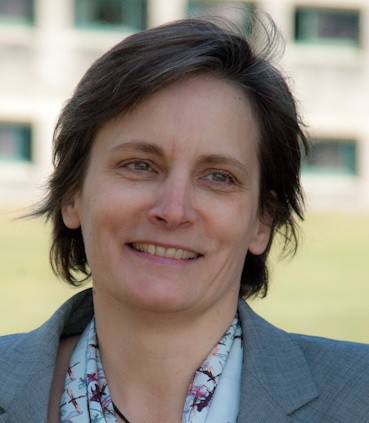
Prof. Corinne Le Quéré
in recognition for her outstanding contribution to marine biogeochemistry and climate sciences.
“Drivers of recent trends in the carbon cycle and implications for climate change”
With the Paris protocol in sight, this presentation will review recent trends in carbon emissions and their partitioning among the atmosphere, land and oceans – the so-called ‘carbon sinks’. The presentation will detail how CO2 emissions from fossil fuel combustion and land-use change are estimated based on combined biogeochemical processes and socio-economic statistics, and discuss their uncertainty. It will highlight the evolution of CO2 emission, their regional partitioning and drivers, and discuss the anticipated trends considering the underlying uncertainty, historical precedents, and model scenarios. On average 55% of the total emissions of CO2 are absorbed by the carbon sinks. The sinks are sensitive to the emissions trajectory, to the level of CO2 concentration in the atmosphere, and to climate change and climate variability. The presentation will show how the contribution of each of these processes can be quantified. The analysis of recent trends suggests that recent climate change is already affecting the carbon sinks in a way that exacerbates the rise of CO2 in the atmosphere. Both semi-arid regions (on land) and the Southern Ocean have been shown to be the source of large variability. Additional insights into the functioning of the carbon sinks could be gained by making use of the increasing availability of decadal constraints on the individual components of the carbon cycle. Based on our current understanding of the carbon cycle, the presentation will comment on the likely trajectory of atmospheric CO2 in the coming decades and on the implications for climate change projections.
Blaise Pascal Medal in Earth and Environmental Sciences – Atmospheric Physics

Prof. Chrisos Zerefos
in recognition for his outstanding contributions for several decades to Atmospheric Physics, especially concerning the atmospheric ozone problem.
“Our Environment and Art”
Art has been influenced by our environment since the dawn of the humans in our planet. The lecture will cover the effects of global and regional changes as depicted by artists in the past centuries. Global changes are also influenced by large volcanic eruptions. Red-to-green ratios as depicted in paintings by great masters in the past and with digital cameras at present can provide important environmental information towards estimating aerosol optical depths at sunsets. The method has been tested at a number of large known volcanoes in the past and provides an estimate that has been tested with a large number of cases. Following large volcanic eruptions, statistically significant excursions of red-to-green ratios have been observed and radiative transfer model calculations were used to compile time series of aerosol optical depths at 550nm over northern middle latitudes. The Tambora eruption is among the most prominent AOD phenomena of the past few centuries as far as the red-to-green ratios in historic paintings are concerned. Comparisons with different proxy methods with the proposed chromatic method will be presented for the case of the Tambora eruption in an attempt to further quantify and rank the phenomenon and its environmental consequences. Different influences on artists range in other arts such as sculptures and music, dance, poetry and literature.
Blaise Pascal Medal in Materials Science
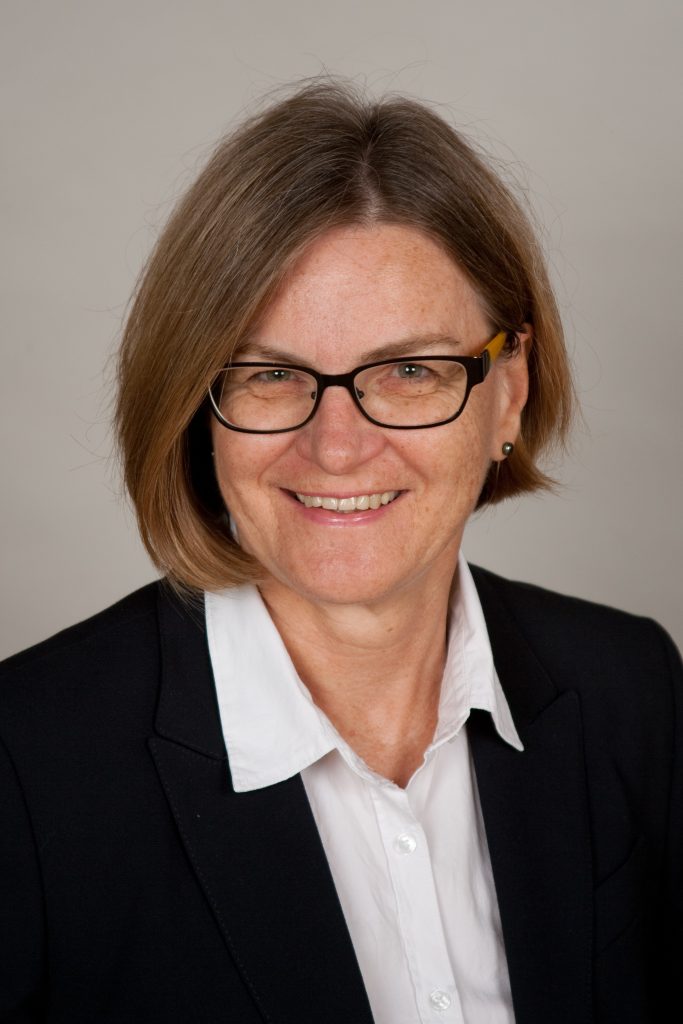
Prof. Ulrike Diebold
in recognition for seminal contributions on the structure and properties of metal-oxide surfaces and their application in catalysis, and for sustained leadership in Materials Science.
“Surfaces of Metal Oxides, Studied at the Atomic Scale”
Surface science studies of metal oxides have experienced a rapid growth during the last two decades. The reasons for this surge in interest are quite clear: after all, most metals are oxidized under ambient conditions, so in many instances it is the oxidized surface that deserves our attention. In addition, bulk metal oxides exhibit an extremely wide variability in their physical and chemical properties. These are exploited in established and emerging technologies such as catalysis, gas sensing, and energy conversion schemes, where surfaces and interfaces play a central role in device functioning. Hence a more complete understanding of metal oxide surfaces desirable from both a fundamental and applied points of view.
The first challenge is simply finding out how a surface looks like: the regular, periodic arrangement in a lattice inside solid is often perturbed by the presence of a surface or interface. Once the geometric structure of an ideal surface is established, understanding defects is the next challenge. No surface is ever perfect. In particular for metal oxides imperfections such as missing atoms or step edges are often the most interesting aspect, as they affect the local electronic structure and surface chemistry. Surface structures and defects can be directly observed with Scanning Tunneling Microscopy using model systems under idealized conditions. In the talk I will give examples of such surface science results, and will try to relate the gained fundamental insights to applications.
Blaise Pascal Medal in Mathematics
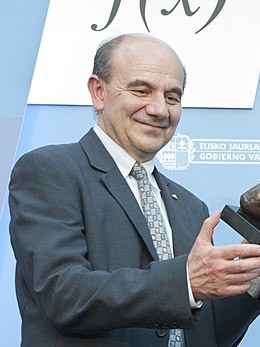
Prof. Luis Vega
in recognition for seminal contributions on the harmonic analysis and of Fourier methods in partial differential equations.
“The Talbot effect and the evolution of vortex filaments”
I will present an interesting connection between the well known Talbot effect in Optics with the dynamics of vortex filaments that evolve under the so called Binormal law.
Blaise Pascal Medal in Physics
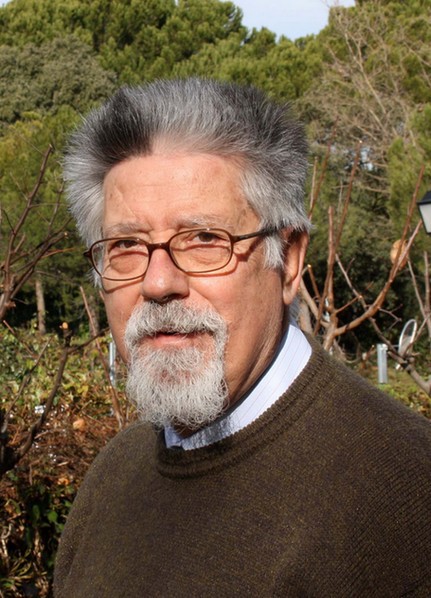
Prof. Manuel Garcia Velarde
in recognition for seminal contributions on the fluid physics and, in particular, interfacial phenomena at large.
“Fluid Physics and Interfacial Phenomena”
The Physics of Fluids deals with phenomena and problems mostly at human level, daily life. Take some interfacial phenomena to mention a few I have been working with. As shown long ago by B. Franklin, a tea spoon containing two to three milliliters of oil, immiscible and lighter than water, may cover two thousand square meters the surface of a lake, thus permitting to estimate the size of a molecule (about twenty five Ängstrom). A soup spoon of active charcoal offers an adsorption surface of several square kilometers, useful to trap bacteria and other tiny dirty stuff including gases. The O2/CO2 exchange in our lungs is done on a surface of about a hundred square meters, a process jeopardized in certain newborn babies unable to produce a particular surfactant phospholipid. Fluid Physics deals with flows and their stability, capillarity, patterned convection, surface and internal waves, tsunami, freak/rogue waves, turbulence, etc To account for fluid and flow behavior we need statistical mechanics and kinetic theory, otherwise we are in trouble to understand how from microlevel (atomic/molecular motions and their collisions) emerges mesolevel (fluctutations, phase transitions) and macrolevel (say thermodynamics and hydrodynamics). The understanding of wetting and spreading processes (including the formation and stability of colloids like paints and others) was possible only when theory combined elements from quantum electrodynamics, thermodynamics and hydrodynamics at the nanolevel. Useful metaphors can be extracted from knowledge of fluid physics. Recently, building upon the hydrodynamic framework used to describe how a surfer does on a bore in a river, I have developped a theory of (nonlinear) electron transport by considering electron surfing on soliton-like waves in (anharmonic) crystal lattices.
Blaise Pascal Medal in Social Sciences
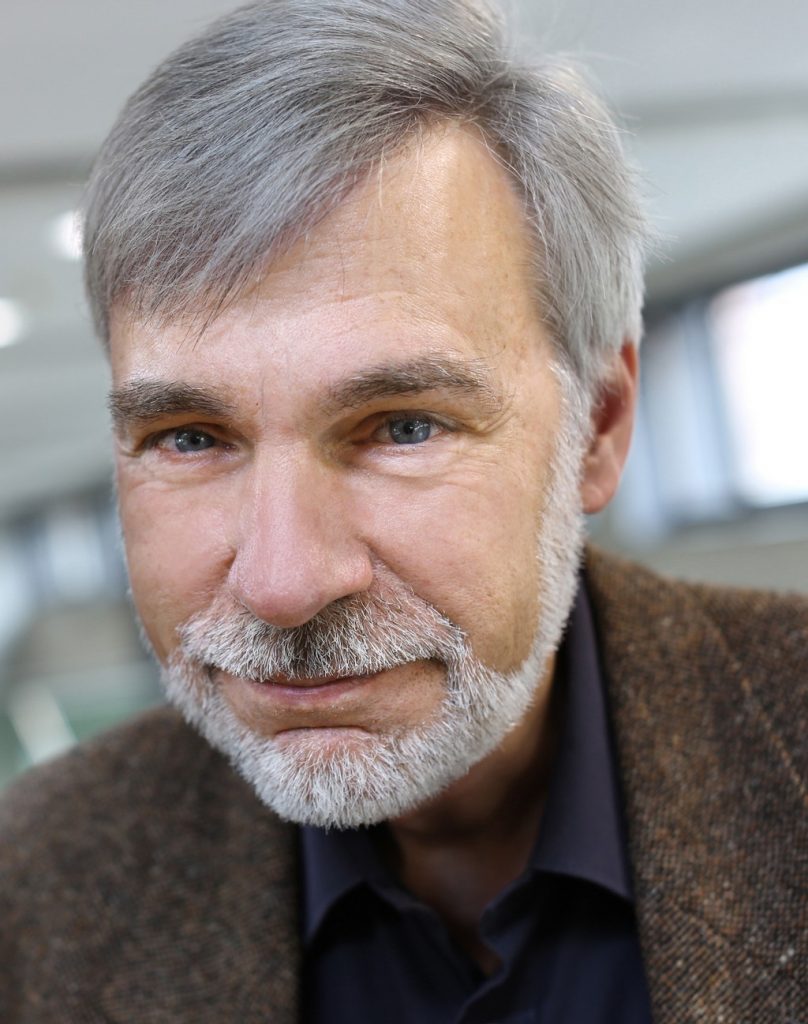
Prof. Martin Carrier
in recognition for his scientific work as philosopher and historian of sciences, leading from epistemology to society.
“Methodological challenges of the commercialization of scientific research”
The strong application pressure on science raises the question whether letting economic powers set the research agenda hurts science in methodological respect – as many critics suggest. In fact, cases of research projects and research findings can be identified that betray one-sided interests and modes of evaluation. However, the traditional ideal of objectivity as neutrality is out of reach in areas that are subject to strong non-epistemic interests. A pluralist understanding can help capture important aspects of the notion of objectivity. Further, the direction of research can often be successfully influenced by setting suitable incentives. In contrast to the traditional understanding, science can often be directed into specific pathways and toward certain practical achievements. However, epistemic research is still needed to make application-oriented research sustainable. Epistemic research is needed for creating a sufficient reservoir of knowledge to be tapped and for prompting a multiplicity of approaches in the scientific community.
In collaboration with :
(logos)
Gallery
Thank you to Mr. Sebastien Hervé (Université de Bretagne Occidentale, Brest, France) for the pictures.












































































